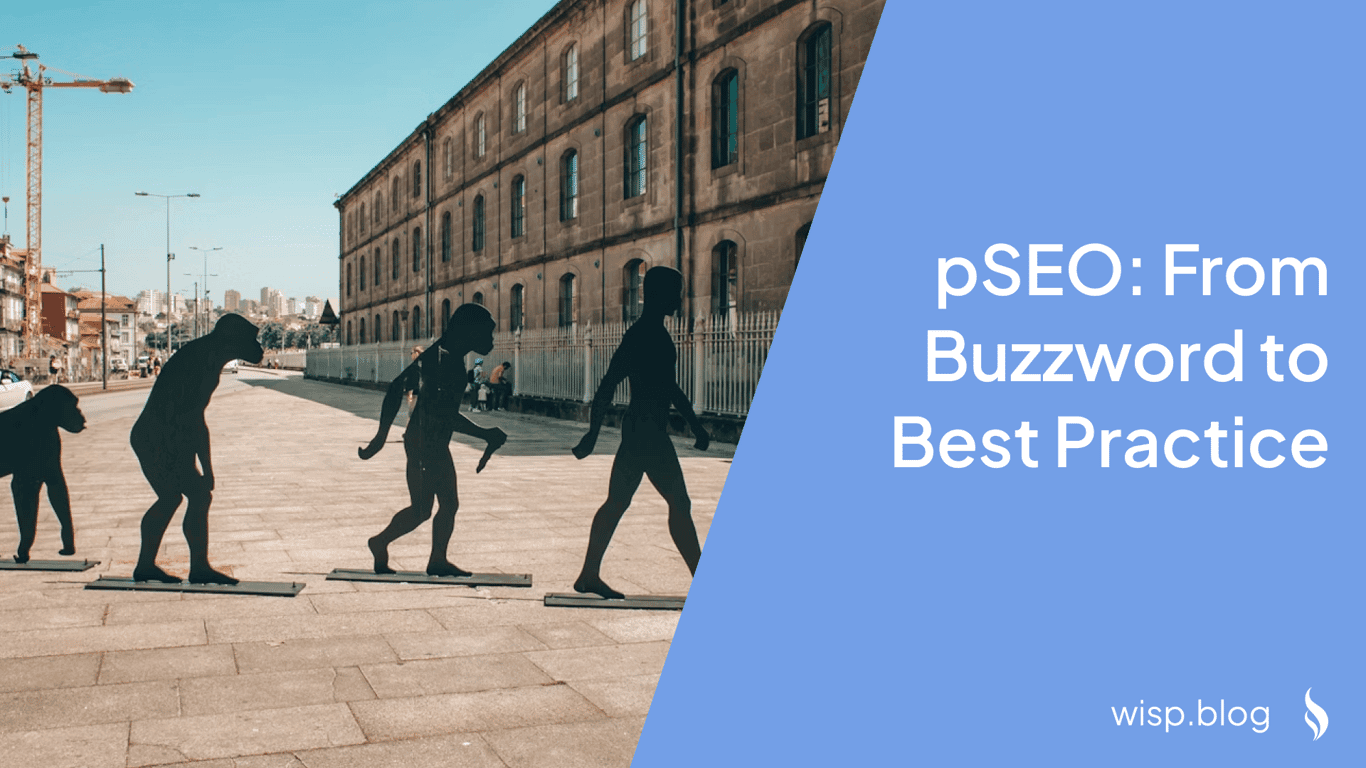
Upon checking my analytics dashboard recently, I noticed an unusual traffic referral source tagged with perplexity. Digging deeper, I found that this traffic was coming from users who had been searching queries on Perplexity AI, an emerging AI-driven search engine. This discovery piqued my curiosity and made me realize how the landscape of search engine optimization (SEO) is shifting with the advent of AI technologies like Perplexity AI.
How do You Know if Perplexity is Citing Your Content?
On Google Analytics

One way you can see if Perplexity is sending you traffic is to filter your traffic's first source. If you are using Google Analytics, head over to the Traffic Acquisition report and apply the filter for First user source and set it to filter by those traffic with source containing perplexity.
On Posthog

If you are using Posthog's Analytics, you can apply similar filter in the Web Analytics tab by setting Referrel URL to contain perplexity.

What I love about Posthog is that you can quickly scroll down on the same report to see which are the pages that are being referenced to give you an idea about what the user is likely querying about.
Understanding Perplexity AI and Its Impact on Traffic
What Is Perplexity AI?
Perplexity AI is a cutting-edge search engine designed to provide accurate, up-to-date, and referenced summaries of web content. Unlike traditional search engines, Perplexity AI is tailored to answer search-like queries by summarizing information from a variety of sources, thus minimizing inaccuracies and hallucinations commonly seen in AI-generated content.
Key Features
State-of-the-Art AI Models: Utilizes the latest AI models to ensure the quality and accuracy of search results.
Focused on Search-Like Queries: Specializes in providing precise answers to user queries by summarizing content from the internet.
User Control Over Resources: Users can specify the types of sources they want Perplexity AI to pull information from, such as academic papers, YouTube, Reddit, or the entire web.
Differentiators from ChatGPT
While ChatGPT, launched by OpenAI, serves as a general-purpose chatbot capable of handling a wide variety of AI language tasks, Perplexity AI is specialized in search accuracy and providing referenced information. ChatGPT excels in versatility, supporting multimodal inputs and handling tasks ranging from answering factual questions to generating creative content.
However, Perplexity AI stands out with its focus on summarizing accurate and multi-sourced information, making it a powerful tool for search-related queries.
How Users Navigate to Your Site from Perplexity?

In the diagram above, you can see Perplexity citing various different sources when answering a user's query. Behind the scene Perplexity has crawled and indexed the internet so that it is able to pull information from various sources quickly when responding to users' queries. And to make it's response more 'authoritative' than it's competitor, it's able also provide the sources where it derived its response from too.
The sources at the top of the query is how user navigate to your website from Perplexity.ai.
The Evolution of SEO: From Humans and Search Engines to AI
Traditional SEO vs. AI-Driven SEO
Traditional SEO strategies primarily targeted human users and search engine algorithms, relying heavily on techniques like keyword optimization, backlinking, and meta-tagging to improve website rankings. However, the advent of AI-driven search engines like Perplexity AI has introduced a new dimension to SEO. These advanced systems utilize natural language processing (NLP) and machine learning to understand context, semantics, and user intent more effectively than ever before.
This shift requires content creators and businesses to rethink their SEO strategies, focusing not just on keywords but also on delivering comprehensive, high-quality content that aligns with user intent and is easy for AI systems to interpret.
Strategies for Optimizing Content for AI-Driven Search Engines
Creating AI-Friendly (and Human-Friendly) Content
To optimize for AI-driven search engines, it is crucial to create content that is both AI-friendly and engaging for human readers. Here are some key strategies:
Use Schema Markup: Implement schema markup to provide additional context about your content, making it easier for AI to categorize and understand. For example, use FAQ schema to mark up frequently asked questions and their answers.
Provide Comprehensive, Detailed Answers: AI systems value in-depth content that comprehensively addresses user queries. Make sure your content provides thorough explanations and insights.
Maintain Clarity and Readability: Use short paragraphs, bullet points, lists, and simple language to enhance readability. Tools like Grammarly can help ensure your content is clear and error-free.
Structuring Content for Featured Snippets
Featured snippets are concise, direct answers to user queries that appear at the top of search results. To increase the likelihood of your content being featured in snippets:
Start with Direct Answers: Begin sections with brief, well-structured answers to common questions.
Use Lists and Tables: Organize information in easily extractable formats, such as lists and tables.
Effective Use of Headings: Descriptive headings help AI understand the structure of your content.
Leverage Text Fragments: Use URL text fragments to highlight key sections for AI tools.
Technical SEO for AI Search
Optimizing the technical aspects of your website is essential for AI-driven search engines:
Mobile Optimization: Ensure your website is mobile-friendly with a responsive design.
Fast Load Times: Optimize images, enable browser caching, and use content delivery networks (CDNs) to improve page speed.
Secure Site (HTTPS): Implement HTTPS to enhance security and trustworthiness.
Specific Strategies for Ranking on Perplexity AI
Comprehensive Content Creation
To rank well on Perplexity AI, it is vital to produce high-quality, comprehensive content:
In-Depth Articles: Write articles that cover topics extensively, providing valuable insights and unique perspectives.
Clear and Concise Language: Use straightforward, easy-to-understand language to improve readability for both users and AI.
Relevant Subheadings: Break up content with relevant subheadings to enhance organization and readability.
Optimizing for Natural Language Queries
Given Perplexity AI’s focus on natural language processing, structuring content around natural language queries is key:
Use Conversational Language: Mimic natural speech patterns in your headings and content.
Long-Tail Keywords: Incorporate long-tail keywords that reflect how users naturally phrase their searches.
Anticipate Follow-Up Questions: Address potential follow-up questions within your content to provide additional value.
Leveraging Structured Data
Structured data helps Perplexity AI understand and categorize your content:
Implement Schema Markup: Use structured data to provide context, such as FAQ schema for frequently asked questions.
Include Metadata: Provide relevant metadata to improve categorization and understanding.
Building Topical Authority
Establishing your website as a trusted source of information in your niche is critical for ranking on Perplexity AI:
Interlinked Content: Create a network of interlinked articles that demonstrate your expertise.
Regular Publishing: Consistently publish content on topics relevant to your business or service.
Cite Reputable Sources: Reference authoritative websites to enhance credibility.
Engage with Industry Leaders: Participate in industry discussions and engage with thought leaders.
User Engagement and Analytics
Monitoring and enhancing user engagement is crucial for maintaining high rankings:
Encourage On-Page Interactions: Foster engagement through comments, shares, and interactive elements.
Optimize for Dwell Time: Create compelling content that keeps users on your page longer.
Leverage Analytics: Use tools like Google Analytics to track user behavior and adjust your strategy accordingly.
Challenges and Considerations
Common Complaints by Companies
While Perplexity AI offers numerous benefits, some companies have raised concerns about content accuracy, industry bias, and intellectual property issues. Addressing these challenges involves ensuring the accuracy of your content and being mindful of AI system limitations.
Legal and Fundraising Aspects
Perplexity AI has faced legal challenges and continues to navigate fundraising efforts to support its growth. Staying informed about these developments can provide insights into the platform’s future trajectory and potential impacts on your SEO strategy.
Conclusion
The rise of AI-driven search engines like Perplexity AI marks a significant shift in the landscape of SEO. By understanding how these platforms operate and optimizing your content accordingly, you can enhance your visibility and drive more traffic to your website.
As AI technologies continue to evolve, staying updated with the latest trends and adapting your strategies is crucial for maintaining a competitive edge.
Recommendations for Content Creators and Businesses
Content creators and businesses should focus on creating high-quality, AI-friendly content, leveraging structured data, and building topical authority. By doing so, they can effectively navigate the changing SEO landscape and capitalize on the opportunities presented by AI-driven search engines like Perplexity AI.



